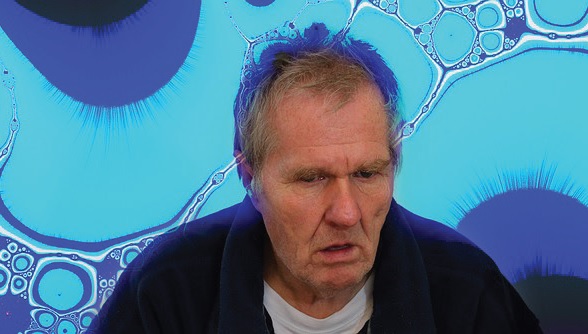Positive Health Online
Your Country

Medicine’s Fresh New Hope
by Rajgopal Nidamboor(more info)
listed in neurological and neurodegenerative, originally published in issue 292 - February 2024
Originally published in: India First 16 June 2023, Page 38
https://indiafirstepaper.com/epaper/
It goes without saying that neurobiology holds fresh hope for individuals suffering from emotional as well as other developmental disorders. This is because of the prospect of quick diagnosis — in other words, doctors would be able to ‘tap’ and treat abnormal neurological ‘wiring’ that occurs, in life, earlier than ever before.
Research has isolated the protein, calcineurin (CaN), which controls synapse formation, action and function. CaN is associated in tetchy connections between cells. This has predictably led to the development of a technique that specifically blocks the interaction between CaN and other cell factors in the nucleus. This, in effect, is, again, evidenced to help analyse the effects of neuronal connections in the visual system. Research suggests that inhibiting such a CaN function could result in more dendrite (finger-like cells at the end of a neuron) branches and synapses — where neurons connect and communicate with each other.
There are a host of new insights that have emerged with regard to how neurons ‘regulate’ the progression of dendrites and their intricate branches. This has led researchers to contend that such insights could help them to better understand brain development, as also function. This would, in effect, enable them to treat and restore neuronal connections lost due to brain injury, stroke, or other neurodegenerative anomalies too.

New research connotes that the ‘Golgi outposts’ (satellite organelles, or organizing centres) perform a key role as ‘delivery agents’ for proteins. Proteins, as you know, are building blocks of emergent dendrites. The Golgi apparatus is a cellular depot. It is responsible for receiving, cataloguing and transporting the cargo of newly synthesised molecules needed for cell growth and function. It was previously believed that only a central Golgi apparatus played a critical role in such allocation, but not anymore. Golgi has a stereotyped configuration, a ‘laden’ system lodged in proximity to the cell nucleus. While the neurons in our brain are vast, with a surface area about ten thousand times that of the average cell, it is, indeed, a big question as to where all the membrane components emerge to ‘spawn’ the composite surface of growing dendrites. Recent research, however, has found a plausible answer – that distant structures in dendrites – the Golgi outposts – uphold a decisive responsibility.
New studies corroborate the fact that the Golgi outposts are prone to materialise in longer dendrites, including the Golgi in the focal cell body that becomes acquainted with longer dendrites too. Studies suggest that growing dendrites are homogeneous in length; they also grow at a consistent rate. What is obvious is: when the Golgi navigates towards one dendrite, it grows strongly to ‘surface’ as the longest dendrite, while establishing itself at ‘favoured’ dendritic branch points.
It is evident that new, emerging studies would delve into the nitty-gritty of the Golgi outposts – of how they arrive at dendritic branch points and what consignment they dispense. The outcome of such studies could provide significant information on the mechanism and regulation of neuronal growth. The advantage of such research endeavours is, of course, imminent – it would not only establish, but also offer a new clinical perspective on brain development disorders, which may encompass abnormal dendritic structures.
It is evidenced that most neurodegenerative disorders, including Parkinson's and Alzheimer's disease, are outcomes of flawed protein synthesis. The downside is – we do not know, as yet, as to how and where integral membrane proteins are synthesised and processed by neurons. Once it gets deciphered, it would be akin to reaching the next level – in terms of managing brain disorders with better, clinically safe, as also effective therapeutic modalities.
It would be exhilarating, as also practical, to grasp what new research has unveiled – the first artificial nerve cell device which communicates with nerves in their own ‘dialect’ vis-à-vis neurotransmitter chemicals, not electrical impulses. The novel manoeuvre engages the same neurotransmitters that natural nerves use. This allows the ‘robotic’ nerve to subtly target specific neural pathways without the ‘wobbly’ side-effects of electronic neural stimulation. While the capability is still in its foundational stage, scientists are euphoric with the stirring prospect it holds to bring about a paradigm shift in brain-electronics interface. When the device achieves ‘critical mass,’ it’d get jazzed-up to ‘propel’ the neurotransmitters needed to regulate disorderly nerve ‘firings’ associated with certain brain disorders, viz., schizophrenia.
The next big leap is just as adrenaline-charged. As artificial nerve cell technology becomes petite and affordable, ‘synthetic’ nerves would be the norm to making bionic brain prostheses for brain injury and stroke victims – a ‘go-between’ biological brains and computer systems.
Acknowledgement Citation
Originally published in: India First 16 June 2023, Page 38
https://indiafirstepaper.com/epaper/
Comments:
-
No Article Comments available